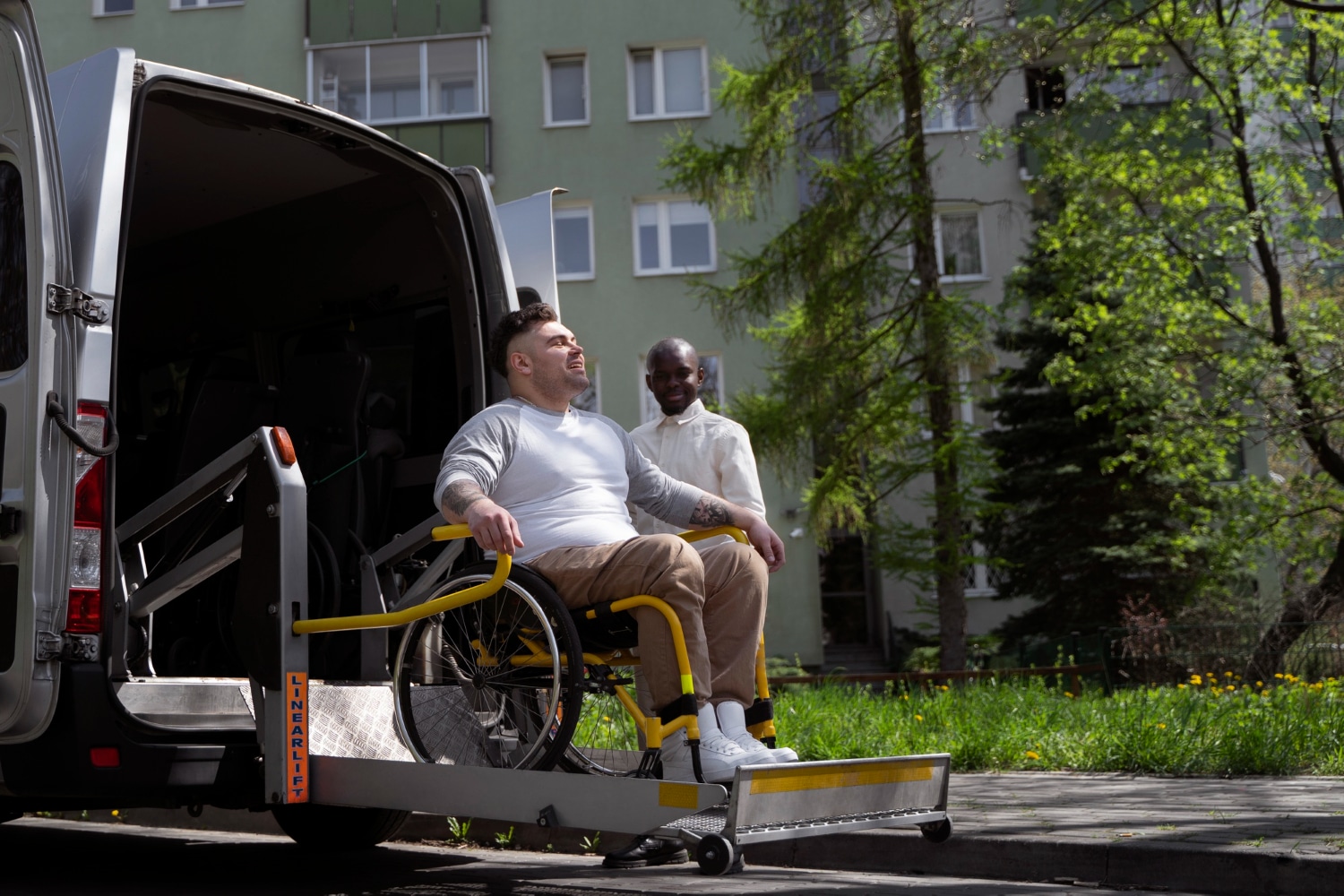There are several ways to make transferring from your wheelchair to car seat easier. Once you’ve got the routine down pat, with your wheelchair-to-car transfer devices and other equipment just right, getting in and out of your wheelchair and car will be a breeze. Or as breezy as it can get, anyway!
Which means you can enjoy more time on the road exploring.
With a significant range of transfer options available to help, a wheelchair to car transfer can be relatively simple. That goes for whether you’re the driver or a passenger. The key to deciding what’s best suited your individual needs is understanding the most beneficial wheelchair to car transfer devices and options.
Table of contents
- Start with the right converted or wheelchair accessible car
- Portable wheelchair to car transfer options
- Mechanical wheelchair to car transfer devices
- FAQs
- How to protect your equipment with insurance
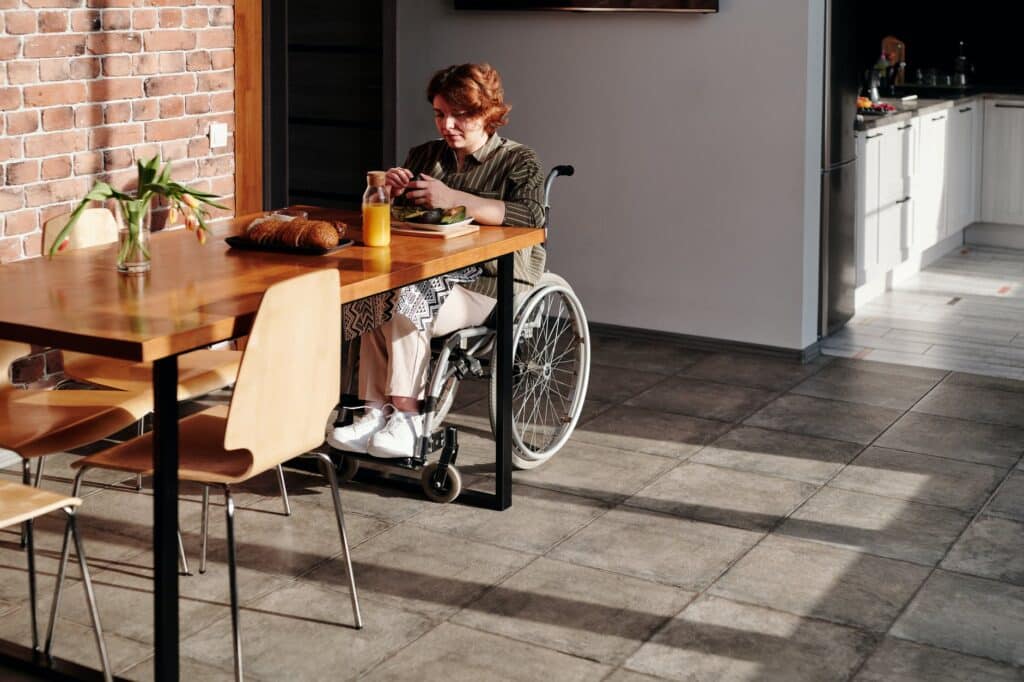
Start with the right converted or wheelchair accessible car
Using the right base car helps guarantee transferring equipment will function properly. Of course, it isn’t always possible to choose if you’re travelling in someone else’s vehicle. But having a well-designed wheelchair accessible vehicle or a disability converted car will definitely make things easier with transferring from your wheelchair into the car.
If you’re using a ramp, we recommend a van or 4WD as these tend to be higher off the ground with wider and larger doors. They’re also typically easier to fit wheelchair ramps to. For a person who has difficulty bending this is a good option. However, someone of short stature may find it difficult.
Of course, there’s potentially a whole range of options for making a transfer from wheelchair to car (and vice versa), other than a ramp. We explore these further down the article.
Who you can talk to
A driver trained occupational therapist can help assess your ability to transfer from your wheelchair and the kind of equipment needed to do so safely. They’ll also support you when purchasing a specialised vehicle.
Another source for information is your vehicle converter. They’ll need to inspect your car to determine what seating and other modifications will be suitable. For example, if you’ll be driving rather than a passenger, an adjustable steering column can provide you with more room to transfer from wheelchair to car seat.
Here’s some other useful advice:
- The difference between wheelchair accessible vehicles and converted cars
- Features to look for when buying a converted car or wheelchair accessible vehicle
- Things you need to know about wheelchair accessible vehicles
- How to choose wheelchair ramps for your car
- Is my airbag safe for use with disability driving controls?
Before installing any transfer equipment, check if the existing car seats can be adjusted to assist in transferring.
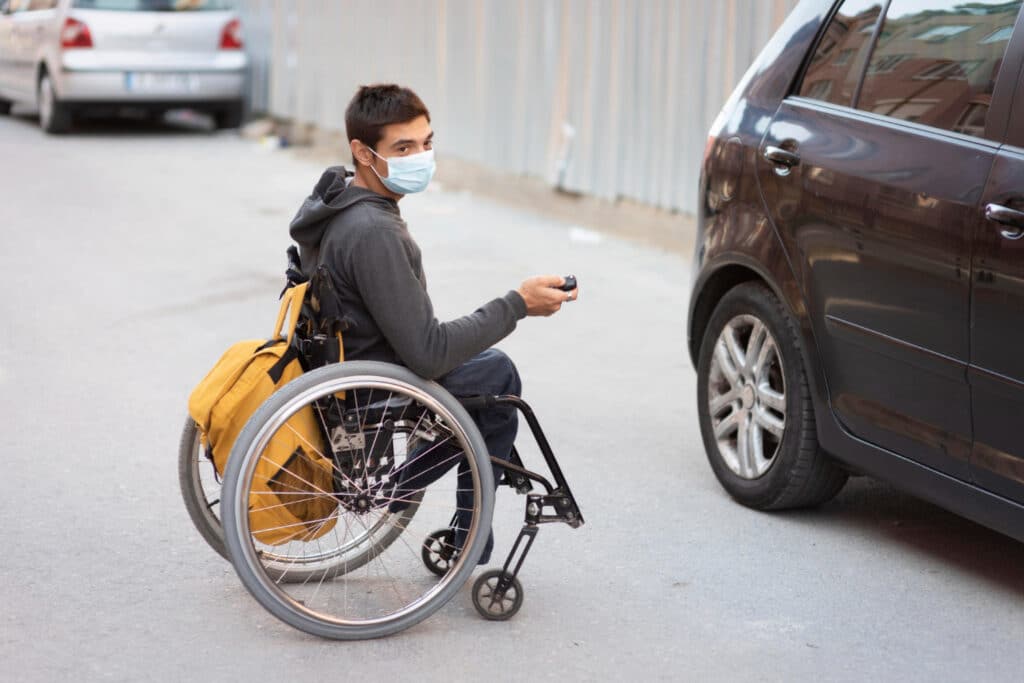
Portable wheelchair to car transfer options
There are a variety of wheelchair to car transfer devices that can be used in and with your vehicle as well as across multiple cars.
Transfer handles
Transfer handles, also known as car support handles, give the user something to hold on to as they enter and exit the car. These handles are added to and removed from the lock on an open car doorframe, though may not be compatible with some car models.
Transfer straps
These straps help the wheelchair user lift and support themselves during transfer. The straps are looped over windows or on door grab handles, simplifying the transfer from wheelchair to car.
High-density foam pillows
These can help create a firm, even base on an existing car seat. They also provide extra support while transferring or travelling.
Leg and thigh lifters
This leg lifter is designed for people with little or no leg movement to lift their legs into place. According to Aidacare, the leg lifter features an upper loop, which fits around the hand and wrist, and a lower stiffened loop, which slides over the foot to provide control of the leg.
Sliding boards and mats
These surfaces create a bridge between the wheelchair and car, making it easier for the user to move to and from their chair into the car. Add a swivel cushion separately to help with rotating into position, similar to a lazy Susan. You can see them in action in the video below:
Mechanical wheelchair to car transfer devices
Alongside readily available portable transfer equipment, there are also mechanical varieties. Basically, this is equipment that’s professionally and permanently installed and makes the transfer from wheelchair to car seat significantly easier.
Swivel seating systems
These work by mounting a car seat to a turning base so it can swivel towards, then outside of, the car door and vice versa, making the transfer from wheelchair to car seat simpler. A wheelchair user just sits on the car seat and is swivelled into spot. This system reduces additional movement that can be uncomfortable or difficult.
Swivel seat systems can be manual or electronic. However, operating a manual model can be tricky and will require significant strength. Swivel seats are suitable for driver, front or rear passenger seats, and can be standard to the vehicle or custom made.
Here’s example of a swivel seat system below:
Lowered swivel seats
A lowered swivel seat allows the car seat to extend from the vehicle and be lowered to the appropriate height for transferring. Using electronic controls, this seat can be pre-programmed to the suitable height for the user. This kind of transfer system will require a large vehicle, so check with your local converter to ensure your vehicle will accommodate this design.
Transfer seats
A transfer seat allows the wheelchair user to enter/exit the car without leaving their chair. The specialised wheelchair seat detaches and is moved into place by a receiving dock. A carer assists with this transfer, though some car models may not suit this equipment.
Here’s an example:
Lifts and hoists
A sling lift transfers a person directly from a wheelchair to their car seat. These wheelchair to car transfer devices are typically mounted to the roof or floor of a car and can be manual or electronic. You can remove some models to allow others to use your car as needed.
Read about lifts and hoists for the transfer from wheelchair to car in more detail. Choosing the right one will make transferring from your wheelchair to car significantly easier.
A safer option
If you have an accident, being in a regular car seat is safer however it doesn’t facilitate a simple transfer from wheelchair to car seat. This is where a wheelchair restraint can assist.
A wheelchair tie-down and occupant restraint system allows you to remain in your wheelchair while in the vehicle. Meaning you can achieve the same safety as a passenger seat. It also lessens the challenges associated with transferring from wheelchair to car seat. But of course, it does require significant modifications to your vehicle. And it does limit you in terms of which vehicles you can transfer into and out of easily.
However, if you do decide on a tie-down system, your local disability converter should be able to help with this installation.
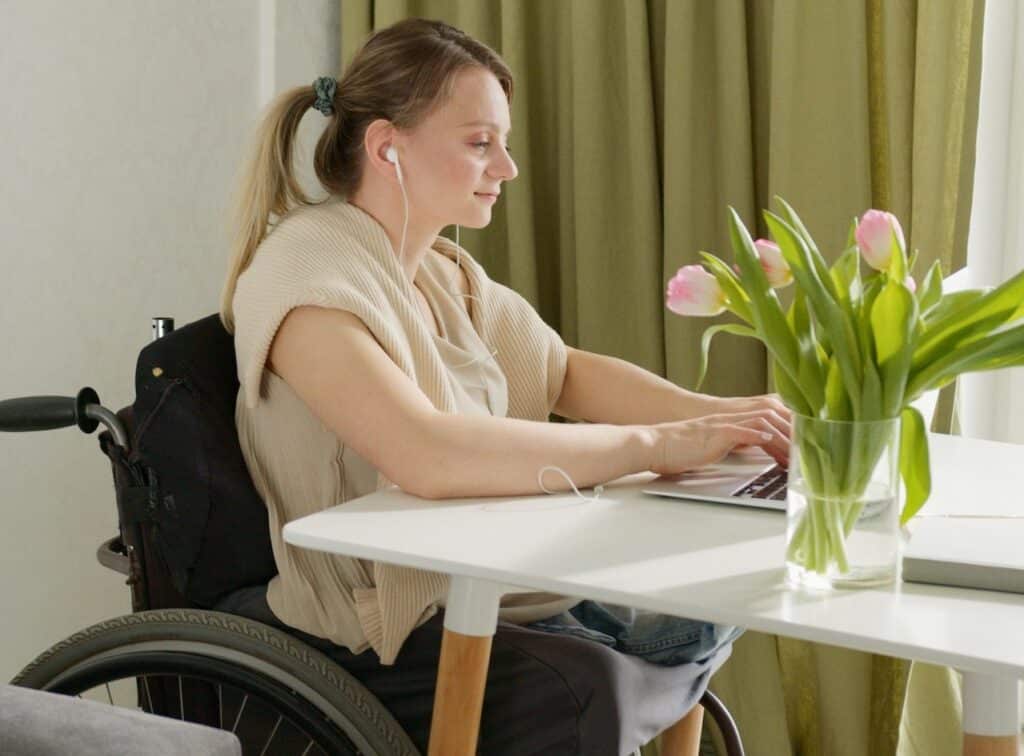
FAQs
Can a wheelchair fit into a car?
Since wheelchairs come in all shapes and sizes, it’s important to know what exactly you’re transporting. Certain technical aspects determine whether a wheelchair can fit into a car. Below are some important questions to think about.
Wheelchair-friendly cars have a specific design to accommodate all sorts of wheelchairs, however, a standard wheelchair can fit in the boot of most cars. Some lightweight chairs come with storage bags too.
Or, you might need a bumper-mounted rack or top-mounted carrier (more on these further down). With an electric wheelchair, it may be necessary to transport it in an SUV or van.
What are key considerations when transporting a wheelchair?
The best option depends on the needs of the individual using the wheelchair, the type of wheelchair, and the vehicle. In order to figure out which option is the best, you’d have to ask a range of questions including these:
- Can one person load the wheelchair or will you need more people?
- How much does the wheelchair weigh?
- If it can be broken down into pieces, how much do each of the pieces weigh?
- How many pieces does it break down into (particularly important for electric wheelchairs and mobility scooters, but many manual wheelchairs and transport chairs also have seats and leg rests that need to be removed).
- Can the wheelchair collapse? If yes, would this be a lengthy or challenging process?
- In its fully together and/or collapsed form, how big is the wheelchair?
- Do you need to consider any additional mobility equipment?
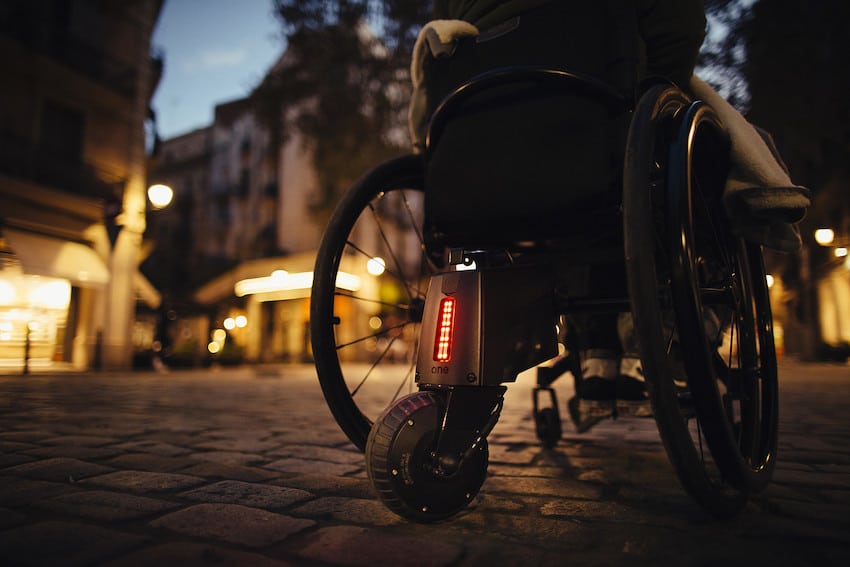
Find the answers to these about the vehicle you’re using
Knowing the wheelchair dimensions won’t do you any good if you don’t know how much storage space you have in the car. So, ask yourself these questions:
- Will the vehicle be suitable for you if you need to be the driver and the passenger at different times?
- Do you have enough boot space to accommodate the wheelchair you’re trying to transport, if you need to?
- Do you have a plan for securing the wheelchair in a vehicle? If you don’t secure it, it’ll slide around once you start driving, which will damage it. It could even become a flying missile and hurt someone in an accident.
- Does the van you’re using have a suitable ramp or lift? Is this equipment secure inside?
- Perhaps a wheelchair or mobility scooter trailer might fit your needs instead?
- Should you speak with an OT and/or a wheelchair accessible vehicle manufacturer or dealer to ensure you’re ticking all the boxes? What other factors haven’t you considered?
How to manually get an electric wheelchair into a vehicle?
Here are some key considerations in understanding how to manually load an electric wheelchair (also called a power chair) into your vehicle…
Consider the big and small bits and bobs
The motor is usually the heaviest part of an electric wheelchair. If you want to disassemble it, you might have to remove the motor and the battery. If necessary, the frame must also be detached from the motor. There are usually four or more pieces to remove so that you can fit them into the boot of your vehicle.
Although most electric wheelchairs may share some of these features and components (that we’re referring to), they’re not all alike. Each manufacturer offers a different selection of parts, components, and accessories for electric wheelchairs.
How you disassemble your electric wheelchair depends on its design, components and make.
Assembly/disassembly process
When purchasing your electric wheelchair, ask as many questions as possible about the disassembling and loading process. As a result, you’ll feel a lot more confident about to correctly transport your electric wheelchair.
As soon as you disassemble all of the pieces – it might appear to be a lot – it’s really quite easy to manage once in the boot. Did you know that it’s also possible to stack your battery box onto your car seat (though this needs to be properly secured)? You can arrange all the wheelchair components in your vehicle the way you’d like, but you’ll need to ensure it fits, is safe and won’t jostle around once the vehicle starts revving up.
You can also watch this video below for a visual example of how to load an electric wheelchair into a vehicle:
How to protect your equipment with insurance
Transfer seating is one of many vehicle conversions we have experience with incorporating into our car insurance for wheelchair accessible vehicles and disability converted cars at Blue Badge.
If your car’s modified with permanent equipment to help make transferring from wheelchair to car easier, you can protect it with us. We also provide wheelchair insurance and mobility scooter insurance. Plus, disability parking permit holders can be eligible for a discount on their disability car insurance premium!


